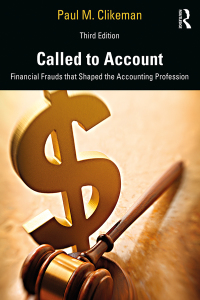Question
Use the transportation method for location problems and POM Software/Excel spread sheet to find the optimal distribution pattern and the cost of goods sold for
Use the transportation method for location problems and POM Software/Excel spread sheet to find the optimal distribution pattern and the cost of goods sold for your two locations alternatives. First solve the problem with one location as the new plant and then do the same for the second. The unit costs for each cell of the transportation matrix should be the sum of the shipping costs and the variable costs of production.
Data
The following data have been gathered for Tanner:
1. The per-unit shipping cost based on the average ton-mile rates for the most efficient carriers is $100 per mile. The average revenue per product is $3,800,000.00.
2. The company currently has the following capacity constraints:
Table 1: Company current capacity
| Location | Capacity |
| Bortherton | 25000 |
| Brizzie | 25000 |
| Sacoma | 31000 |
Table 2: New plant information
| Alternative | Building and Equipment1,2 | Annual Fixed Costs (SGA)1,3 | Variable Production Costs/Unit | Land1 |
| Leyfield | $85,000 | $5,500 | 50,000 | $2,000 |
| Henderson | $60,000 | $7,500 | 45,000 | $1,000 |
1Figures are given in thousands.
2Net book value of plant and equipment with remaining depreciable life of 10 years.
3Annual fixed costs do not include depreciation on plant and equipment.
Location Data Given
| City | Most likely Demand First Year1 | Most Likely Demand After 2-10 years1 | Building and Equipment1,2 | Annual Fixed Costs (SGA)1,3 | Variable Production Costs/Unit | Land1 |
| Bortherton | 5000 | 9000 | $70,000 | $4,000 | 38000 | 400 |
| Brizzie | 13000 | 16000 | $90,000 | $6,000 | 30000 | 700 |
| Sacoma | 23000 | 27000 | $80,000 | $4,000 | 33000 | 500 |
| Henderson | 28000 | 31000 |
|
|
|
|
| Leyfield | 38000 | 42000 |
|
|
|
|
Road Mileage
|
| Bortherton | Brizzie | Sacoma | Henderson | Leyfield |
| Bortherton | - | 178 | 187.8 | 180 | 218.9 |
| Brizzie | 178 | - | 139.8 | 151.6 | 120 |
| Sacoma | 187.8 | 139.8 | - | 13.2 | 30 |
| Henderson | 180 | 151.6 | 13.2 | - | 45 |
| Leyfield | 218.9 | 117.7 | 32.7 | 45.1 | - |
Other assumptions (if needed)
Terminal value (in 10 years) of the new investment is 50 percent of plant, equipment, and land cost.
The tax rate is 19 percent.
Straight-line depreciation is used for all assets over a 10-year life.
Capacity of the new plant production for the first year will be 31 (000) units.
Capacity of the new plant production thereafter will be 56 (000) units.
Cost of goods sold (COGS) equals variable costs of production plus total transportation costs.
Costs to ship from a plant to its own plant are zero; however, variable production costs are applicable.
Step by Step Solution
There are 3 Steps involved in it
Step: 1

Get Instant Access to Expert-Tailored Solutions
See step-by-step solutions with expert insights and AI powered tools for academic success
Step: 2

Step: 3

Ace Your Homework with AI
Get the answers you need in no time with our AI-driven, step-by-step assistance
Get Started


